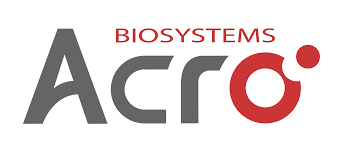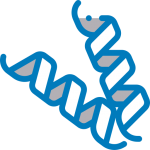
 Human / Rhesus macaque CD40 Ligand / TNFSF5 Protein, Mouse IgG2a Fc Tag, low endotoxin
Human / Rhesus macaque CD40 Ligand / TNFSF5 Protein, Mouse IgG2a Fc Tag, low endotoxin
CDL-H5256
1mg
Brand
ACROBiosystems
Description
Source :
Human / Rhesus macaque CD40 Ligand, Mouse IgG2a Fc Tag, low endotoxin (CDL-H5256) is expressed from human 293 cells (HEK293). It contains AA Met 113 – Leu 261 (Accession # P29965-1). In the region Met 113 – Leu 261, the AA sequence of Human and Rhesus macaque CD40 Ligand are homologus.
Molecule : CD40 Ligand
Synonyms : CD40LG,CD154,CD40L,HIGM1,IGM,IMD3,T-BAM,TNFSF5,TRAP,gp39
Format : Powder
Category : Immune Checkpoint Proteins
Accession : NP_000065.1
Storage : -20℃
Shipping condition : Powder,RT
Molecular Weight : 43.1 kDa
Characteristics :
This protein carries a mouse IgG2a Fc tag at the N-terminus. The protein has a calculated MW of 43.1 kDa. The protein migrates as 45-50 kDa under reducing (R) condition (SDS-PAGE) due to glycosylation.
Endotoxin Level : Less than 0.1 EU per μg by the LAL method.
Buffer : 50 mM Tris, 100 mM Glycine, 150 mM NaCl, pH7.5
Description :
CD40 ligand is also known as CD40L, CD154, TNFSF5 and T-cell antigen Gp39, is a single-pass type I I membrane protein which belongs to the TNF superfamily of molecules. CD40 ligand is expressed predominantly on activated CD4+ T lymphocytes, and also found in other types of cells, including platelets, mast cells, macrophages, basophils, NK cells, B lymphocytes, as well as non-haematopoietic cells (smooth muscle cells, endothelial cells, and epithelial cells). Although all monomeric, dimeric and trimeric forms of soluble CD40 ligand can bind to CD40, the trimeric form of soluble CD40 ligand has the most potent biological activity through oligomerization of cell surface CD40, a common feature of TNF receptor family members.
CD40 ligand binds to CD40 on antigen-presenting cells (APC), which leads to many effects depending on the target cell type. In general, CD40 ligand plays the role of a costimulatory molecule and induces activation in APC in association with T cell receptor stimulation by MHC molecules on the APC. In total CD40 ligand has three binding partners: CD40, α5β1 integrin and αIIbβ3. CD40 ligand regulates B cell function by engaging CD40 on the B cell surface. A defect in this gene results in an inability to undergo immunoglobulin class switch and is associated with hyper IgM syndrome.
References :
(1) Schönbeck U, Libby P, 2001, Cell. Mol. Life Sci. 58 (1): 4–43.
(2) Furman M.I. et al., 2004, J. Am. Coll. Cardiol. 43: 2319-25.
(3) Spriggs, M.K. et al., 1992, J. Exp. Med. 176:1543.
(4) Fanslow, W.C. et al., 1994, Seminars in Immunology 6:267.
Application
Reactivity



